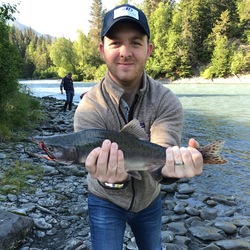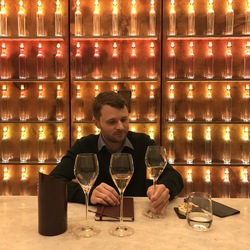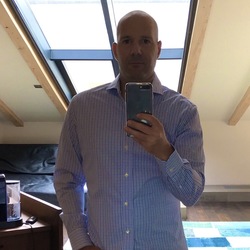First Foot Forward
Seavey Vineyard
Estate Grown Cabernet Sauvignon 2013


Château Grand-Puy-Lacoste
Pauillac Red Bordeaux Blend 2011
One of my first bottles I put in my cellar over 5 years ago. Wanted to make sure there were no issues with storage and I was not disappointed. Drank great. Black fruit. Very oak forward. Well done Bordeaux. — 9 years ago
Brewer-Clifton
Gnesa Chardonnay
Whew! Big forward blast of richness, exotic fruits, flowers both in the nose and on the palate with the first few sips, and then enough acidity to pull together a pretty, citrusy, finish. At first like "Whoa" then like "Ahhh." Really interesting. Perfectly unbalanced if that makes any sense. — 9 years ago
Jordan Vineyard & Winery
Alexander Valley Cabernet Sauvignon 2008
First off, if you are drinker of Jordan, this vintage is a little different. Nose shows lots of fresh fruit and a medium level of oak. A very fruit forward taste with black cherry showing through the most. Other berries add to the fruit flavor overall, but none besides the cherry really individually shine through. The winemakers balanced the French/American oak time and it shows. This mellows the oak flavors and the overall tannin impact. Oak is there but does not overpower and the tannins are quite minimal as well. This also helps the finish really hold for a while. Overall the wine is extremely well balanced with solid fruit flavors (without the sweetness), an oak flavor that is just enough and an general light feel for a Jordan. I prefer the stronger Jordan with some more oak qualities and a little more body, but no complaints here. A good cab introduction to people hesitant of the heavy Napa cabs. — 10 years ago
Quail Hollow
Merlot 2013
A little harsh at first but really smoothed out with some air. Fruit forward, berries, and not too acidic & low tannins. A good addition for an everyday wine. — 11 years ago
Hayes Ranch
Best Foot Forward California Chardonnay 2010
Drank on Friday 22nd in the summerhouse — 11 years ago
Mas L'Avail
Terre d'Ardoise Vielles Vignes Carignane 2011
An eye-opener, the first sip provides a great bouquet of flavor. Creamy, & medium-full in body, I look forward to a glass tomorrow. — 12 years ago
Locations Wine
F-1 Red Blend
Medium dark purple color. Nose of cherry, plum. Not as fruit forward as other Phinney wines. Syrah was very prominent, my first sip was of tart black cherries and definitely had peppery spice to it. Good value at it's price point, but it is definitely not D66. — 12 years ago
Bonny Doon Vineyard
Le Cigare Volant Red Rhone Blend 2013
I love smelling the wines of Randall Grahm. He makes savory walk and talk and jump through hoops. This wine, the 30th anniversary vintage of Cigare, brings it home like it always does. It shows a medium dark color in the glass and on the nose. There is cassis and licorice, but the savory notes carry the load. Black olive is the first smell I get, followed by a bit of tar and a whiff of smoke. Cigar box, leather and bacon fat finish out a complex aroma package. The palate is delicious as always. Grahm says the ‘13 is “less muscular” than the ‘12, but I think there's more to it. This Cigare drinks with the weight and elegance of a Pinot Noir. Black fruit is forward, while more savory aspects of sage and mint come in to join it. The tannins are gentle, the acidity fresh and the finish long. — 7 years ago

The Standish Wine Company
Single Vineyard Shiraz 2003
I can’t pour enough praise on Dan and his talents. I don’t give many wines near perfect scores, but this merits one. The nose is a beautifully balanced mix of floral fruits, earth and spice. Blackberries, huckleberries, boysenberries, black plum, black raspberries, plum, black raspberries, poached strawberries, dark moist soils, loamy dry soil/clay, raspberry cola, smoked meats, medium dark spice, vanilla, clove, nutmeg, lilacs, violets and lavender. The balance is incredible...one of the most balanced wines I’ve had. The structure, tension and length are so close to perfect. It’s in the OMG realm. The tannins are nicely resolved but still have teeth. It’s gorgeously lush and rich. Blackberries, huckleberries, boysenberries, black plum, black raspberries, plum, black raspberries, poached strawberries, hues of blue fruits haunt the palate, dark moist soils, loamy dry soil/clay, raspberry cola, black licorice, touch herbaceous, smoked meats, medium dark spice, vanilla, clove, nutmeg, black & white pepper, dry crushed rocks, stones, lilacs, violets and lavender. The finish is heaven all the way around. To borrow Bordeaux terminology, this is First Growth Shiraz. If you don’t seek out Dan’s wines on the secondary market, you are missing something special. Not at all meant to be enjoyed young. This wine is in a very good spot and has another 10 years of life going forward. — 8 years ago

Kanzler
Sonoma Coast Pinot Noir 2012
First time trying this. A very good Pinot - earth and mushrooms on the nose and fruit-forward with lots of cherry, strawberry and tea on the palate. Light, bright and super smooth - this ranks up there with some of my favorites including Sea Smoke, Pisoni, and Goldeneye. — 10 years ago

Very burgundion in style as well.

Hartwell Vineyards
Estate Grown Cabernet Sauvignon 2012
Really enjoy Hartwell as they continue to produce easy drinking wines. Decanted this and will give in an hour but first sip was smooth, fruit forward with an oaky/slightly tannic finish. Pairing it with a beef sirloin stew. — 10 years ago
Domaine Berthet Bondet
Rubis Côtes du Jura Red Blend 2012
We enjoyed this at Husk Nashville last night. It was recommended bc it pairs well with a wide variety of foods. The sommelier put it on the menu for this purpose & highly recommended their catfish, chicken or pork entrees to go with it. The flavors changed throughout the meal. At first it smelled earthy & musky. Acidic beginning with hints of fennel & a dark cherry. By the middle of our meal it strangely had an effervescent mouth feel & became more fruit forward. By the end it tasted strongly of strawberry jam. The reason I rated it so highly is bc it flowed through dinner so well! - this was the 2012 vintage — 11 years ago
Château Margaux
Margaux Red Bordeaux Blend 2009
Merlot 50 + Cabernet Sauvignon and Cabernet franc some roasted coffee currants very forward and seductive bouquet first new wine since 1909 or the label change in 1929 this third wine has been in the making since 1997 but this was the firstvimtagevtgatvtyeyvjave released this is very smooth and silky with fresh earth and that coffe note through the finish and very smooth and silky tannins this is restaurant only for now excellent — 11 years ago
Malvirà
Langhe Favorita 2010
They started import company in 2008 these are Giorgione friends and all are farmers they are organic they are all friends working toward a similar goal. This is a typical grape of the piedmont has a unique aromas of pretty flowers chalk like mineral. Contrato was the first producer to make sparkling methode champenoise producer in it's 7000! Square foot cellar all products are vintage organic 90% vineyard Born in piedmont everything is done naturally no additives all natural. — 12 years ago
Colonia Las Liebres
Mendoza Bonarda 2012
First Bonarda. Perfect for being out at the foot of the Andes watching "Sunset Boulevard" — 12 years ago
Château Revelette
Coteaux d'Aix-en-Provence Rosé Grenache Blend 2017
Moores. 2017. $19. Always one of the first rose’s to make it to the states. Looking forward to the 2018’s. Hopefully Sunday — 7 years ago
Château Bellegrave
Pomerol Red Bordeaux Blend 2010
Road trips deserve respites. Beaufort, SC’s Old Bull Tavern spinning Marvin, Jimmi, and Stevie while casually offering up perfect garlicky oil bathed snails set upon crazy freshly baked chewy sour dough simply screams for, oh yeah, the wine. This fine Pomerol waits, wanting , her dangerously dark scarlet skin shimmers as she spins in the early evening tempted by the tunes revealing her marooning shades, darker bleeding berries, showing lighter in the wafting inconsistency of candle light. Another spin , a tilt, a voyeur’s gaze, a twirl, and a first kiss’ earthy wet spice on the front succumbs to plum its well-balanced acid clutches begging another spin, The I sip slow seductive deep kiss as she floods forward - I swallow, but she clings slowly, gradually, teetering touching sliding slowly, stealthy, soothingly, seductively signaling - have another hit... Don’t miss this wine or place, both picture perfect dripping southern edge and charm with a French accent and kiss🍷🌀 — 8 years ago
Burn Cottage
Central Otago Pinot Noir 2014
Not sure what the stats are on the 2014 vintage in NZ, but this one touched on elixir for me at first. It tightened up a bit with the Ramen at Kitchen Door, but I would be curious to taste past vintages, and looking forward to future releases. — 8 years ago
Silver Oak
Alexander Valley Cabernet Sauvignon 1992
Surprisingly fruit forward for 25 years. Dark fruit and plum flavors with smoothed tannins. Good bottle bouquet. Cork fell apart but there was no taint to the bottle. Bottle well kept for at least the last 15 years - and supposedly the first 10 before I got it from a private buyer. I would not believe this review if I had not done the tasting myself. I had an 88 and a 90 in recent years that had not held up - flat flavors and thin color — 8 years ago
Mollydooker Wines
The Boxer Shiraz 2013
Yes did the Mollydooker Shake first! Deep color, plum flavor. Been looking forward to drinking this! — 9 years ago
Château Lafite Rothschild
Carruades de Lafite Pauillac Red Bordeaux Blend 1959
57 years old and still acid forward, both blackberry and salted red cherry mixed with dusty Pauillac summer road - complexity still there. An outstanding experience. Doesn't linger for minutes like its first label cousin. — 10 years ago
Château Fortia
Cuvée du Baron Châteauneuf-du-Pape Red Rhone Blend 2010
Low on tannins, high on berries, namely blueberry and cherry. Currants were forward at first but faded. Layers were subtle and became more subtle. Disappointing complexity by the hammy bottom. Was 9.1 and declined to 89...barely. — 10 years ago
Le Macchiole
Messorio Toscana Merlot 2006
Amazing Merlot!!! Pure pleasure - an extraordinary mix of power freshness and complexity. A masterpiece. Those who know me, know that I don't easily grant 5 stars. But here each star is well deserved!!!
My score 95, drink 2014-2028!
The wine is almost black in color, the nose is seductive and essentially you fall in love with this wine from the first sniff. The aromas are rich and concentrated, plum, black cherry, sweet spices, licorice, coffee, chocolate, blueberry jam and much more. Body is full, chewy, rich intense , rich and extracted, a rare combination of fruit forward and freshness, the tannins are round, smooth and caressing, the light acidity keeps you addicted. The finish is long, and addictive.. Impossible to stop drinking it — 10 years ago
Continuum
Napa Valley Cabernet Sauvignon Blend 2005
1919 they decided to move put of Minnesota where it was too cold to plant grapevines started off in the Central Valley Lodi and napa 1933 prohibition ended and made enough money to move to Lodi sunny st Helena winery Charles Krug was next and they went from 150 to 20 wineries after. 1955 Robert founded Robert Mondavi winery firstr winery all stainless he had to go to milk company to get these for the winery. 2005 the first vintage a very well endowed wine currants cassis dark earth espresso chocolate very plush and smooth with great structure and a long finish 2006 very rich with a lot of dense rich currant and cassis berry fruit dark earth and spices lovely structures and depth intense fruit bitter CPC at the end very well endowed most excellent. 2007 a more reserved wine on the nose with big fruit on the tongue dark earth bitter coco and a good hand of acidity very long finish. Most excellent. 2008 roots go 3-5 feet before hitting rock above the fog line sweet tobacco spice espresso and dark coco with big tannins ripe and round with a good amour of spice very long finish 2009 a good amount of dark berry fruit cassis and black cherry liqueur like fruit big but smooth ripe tannins drinking very nicely right now but has the balanc and freshness to last. 38 different lots that get fermented separately they now have a second wine French oak open top and stainless used. 2010 a bit more reserved currant berry fruit dark currant cassis berry fruit some graphite and montal very fresh wine has a good amount of fruit bit needs time a bit reserved year thick currant berry fruit with a long finish 2011 a very forward and seductive wine juicy for being the youngest wine it is very smooth with a long finish — 12 years ago
E. Guigal
La Landonne Côte-Rotie Syrah 2009
la ladonne 100% non destemmed 100% syrah label foot pigeage by naked romans planted for the birth of son philipe in 1975 first vintage 78 — 12 years ago



















Somm David T
Independent Sommelier/Wine Educator
The nose reveals; dark currants, blackberries, heavy black plum, black raspberries, dark cherries and some blueberries. Black tea, expresso roast, anise, crushed dry rocks, big vanilla, clove, a little nutmeg, dry underbrush, sweet tarry notes, leather, woody notes with dark fresh & withering flower bouquet.
The body is big and lush. The tannins are big, meaty and tarry. Very dark currants. Blackberries, heavy black plum, black raspberries, dark cherries and some blueberries & strawberries as they open up. Black tea, expresso roast, steeped fruit tea, anise, crushed dry rocks, dry clay, big graphite, big vanilla, dark spice, clove, light dry herbs, a little nutmeg, dry underbrush, sweet tarry notes, leather, cedar with violets dark fresh & withering flower bouquet. The acidity is round, fresh and beautiful. The big, long, well balanced finish is excellent and look forward to having this in 15-20 years. This one will be a stunner!
Photos of, the barn where they make wine and hosts tastings, our private tasting area inside William’s old office. William desk and their outside terrace area.
Producer history & notes...Seavey Vineyard is located along Conn Valley Road in the eastern hills of Napa Valley, about 15 minutes from the valley floor.
This historical property was originally a cattle ranch. However, records indicate grapes were planted on some of the hillsides as early as the 1870’s. The stone dairy barn, still in existence, was built in 1881.
William & Mary Seavey purchased this property in 1979. The estate was originally founded by the Franco-Swiss Farming Company in 1881 which, closed down when Phylloxera destroyed their grape vines and the Volstead Act (Prohibition) went into effect. At the time of their purchase, they were a horse and cattle ranch. They quickly planted the slopes with grapes and initially sold their fruit to Raymond Vineyards. They have never purchased grapes, all their wine is made from estate grapes. Their vineyards are separated into 20 plus individual blocks.
Today, the property is about 200 total acres of which, 40 acres are planted to vine. Their hillside vineyards produce low yields of rich concentrated fruit. A small block of Chardonnay grows in a cooler lower part of their property. Besides grapes, they also raise cattle which are used to graze the hillsides. They feed the vineyard with the cattle cuttings. In 2003, they were one of the first Napa wineries to install solar.
Mary passed away in 2008 and William died in 2016. There daughter Dorie returned to the family business and now oversees the winery operations. Her brother Arthur also handles national and some small international sales, primarily to restaurants. However, most of their wine is sold direct to consumers.
Seavey’s first commercial vintage was released in 1990 a year after they renovated the stone dairy barn into a working winery. Today this stone building is the centerpiece of the property and is where tastings are hosted.
Since 2011, Jim Duane has been their day to day Winemaker. He’s worked at Robert Mondavi and Stag’s Leap Wine Cellars. It should also be noted that Philippe Melka Winemaker/Consultant has been with Seavey since 1995...one of Philippe’s two initial wine making jobs in the Napa Valley were with Seavey and Lail Vineyards.
Seavy makes about 3,200 cases annually depending on what mother nature brings. They make around two hundred cases of Chardonnay, slightly more Merlot and the rest is of the production is comprised of their Caravina and Estate Cabernets.
— 7 years ago